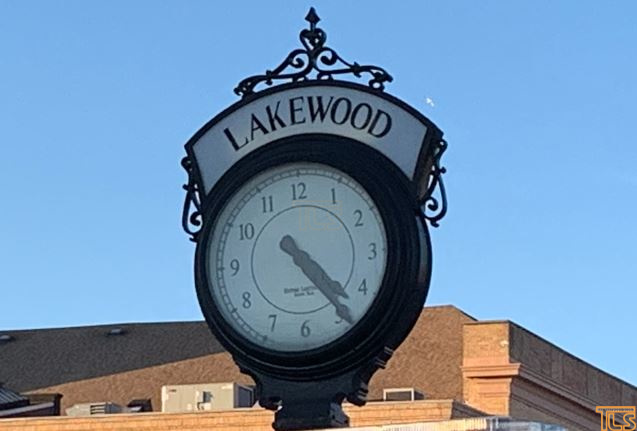It’s that time of year again. When you change your clocks this weekend, the Lakewood Fire District encourages everyone with Smoke and Carbon Monoxide (CO) detectors that still use removable batteries, to change your batteries.
“Change your clock, change your alarm batteries” is a bi-annual fire safety campaign promoting the importance of working Smoke and Carbon Monoxide alarms. Smoke and Carbon Monoxide alarms provide a vital early warning signal in the event of a fire or a Carbon Monoxide incident.
Here are some fascinating but sobering facts from the Lakewood Board of Fire Commissioners in conjunction with Fire Chief Jonathan Yahr, Fire Department Chaplain Rabbi Moshe Rotberg, and the members of the Lakewood Fire Department.
SMOKE DETECTORS
- 2 out of 3 fire deaths are in homes with nonfunctioning smoke alarms.
- In recent years, 70% of home fire deaths resulted from home fires with inoperable or no smoke alarms.
- 38% of total fire injuries occurred in homes with no smoke alarms.
- In reported home fires with inoperable alarms, 50% had missing, disconnected, or dead batteries.
- A home fire impacts the life of an American family every 85 seconds.
- On average, you and your family have less than 2 minutes from the time the first smoke alarm sounds to escape.
- Smoke and Carbon Monoxide alarms provide an early warning and critical extra seconds to escape – but only if they work!
- Most if not all of the above is preventable with properly located and working smoke and Carbon Monoxide alarms.
CARBON MONOXIDE DETECTORS
- Known as the invisible killer, CO is colorless & odorless.
- CO effects adults and children differently, if your detector goes off check on your children and/or the elderly.
- There are numerous potential CO sources, not just your stove or oven.
- CO sources include: kitchen range or vent, water heater pipes, furnace, dryer, heaters, attached garage, neighboring apartments.
- Standard smoke alarms don’t detect carbon monoxide.
- 35 million people are still at risk for carbon monoxide poisoning. Are you one of them?
|
Working smoke and carbon monoxide (CO) alarms save lives by quickly giving you and your loved ones an early warning signal that something is wrong. Fire spreads fast and carbon monoxide is a silent killer. Working alarms are the most critical component of your escape plan.
- Be sure to have the right type of alarm. Alarms must be approved by Underwriters Laboratories (look for a UL mark) and have an audible end-of-life warning. All new and replacement smoke alarms should have a sealed 10-year battery that is non-replaceable and non-removable.
- Have both a smoke alarm and a CO alarm (or a combination smoke/carbon monoxide alarm). One type of alarm is not a substitute for the other.
- If your alarm still uses removable batteries, be sure to change them twice a year. A great reminder is changing batteries on days clocks are changed for daylight saving time. Replace these alarms with ones that contain sealed 10-year batteries as soon as possible.
ALARM INSTALLATION
- Install alarms where you sleep and on every level of your home, including basements.
- Locate alarms on the ceiling, preferably near the center of the room, but not less than four inches from a wall. If the alarm must be installed on a wall, it should be placed between four and 12 inches from the ceiling.
- Consider installing interconnected alarms so that when one alarm sounds, they all sound.
- Special alarms should be installed for those who are hard of hearing or deaf. Strobe lights and bed shakers are available.
- The following locations can either create a false alarm or avoid your detector from properly identifying the CO levels in your home:
In close proximity to any fuel-burning appliance.
In excessively humid areas such as your bathroom.
In direct sunlight.
Near any sources of blowing air such as a fan, vent or open window.
ALARM MAINTENANCE
- Test your alarms regularly by pressing the test button.
- Replace alarms every 10 years or when the alarm signals that it has reached the end of life and needs to be replaced.
- Keep alarms clean by regularly dusting or vacuuming.
WHEN AN ALARM SOUNDS
- If a CO alarm sounds, you and your family should get out immediately and call 911.
- If a smoke alarm sounds, be sure to execute your escape plan.
- If an alarm is set off accidentally, quiet the alarm by pushing the hush or reset button. Open windows and turn on vent fans to clear the air.
- Accidental alarms often are triggered by bathroom steam or cooking vapors. Consider relocating alarms that often sound by accident.
|
Calling on Shabbos and Yom Tov – Fire Department Chaplain Rabbi Moshe Rotberg says:
- Even when in doubt, if there is a chance of danger, one should call the appropriate authorities.
- One should not hesitate to call the Fire Department immediately. What may appear to the uneducated to be “nothing” may, in fact, be deadly.
- A safer choice for Yom Tov cooking is an electrical burner, which can be placed on the stove itself and be utilized with a timer.


Are we changing are clocks for the last time?
Change the time, not your clocks !!
I should have asked are we changing the time on our clocks for the last time?
Thank you $saver for setting me straight. Have a wonderful Shabbat.